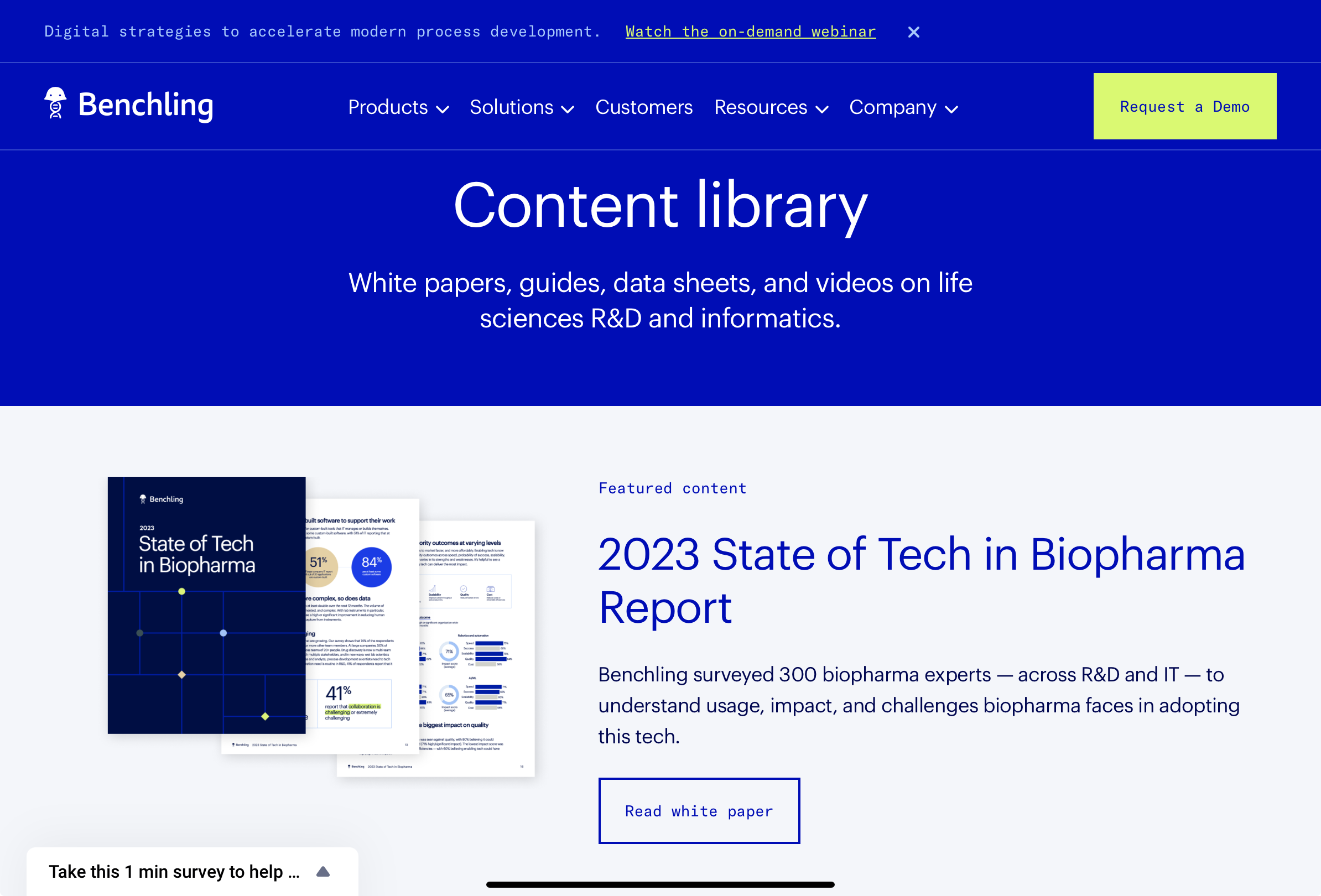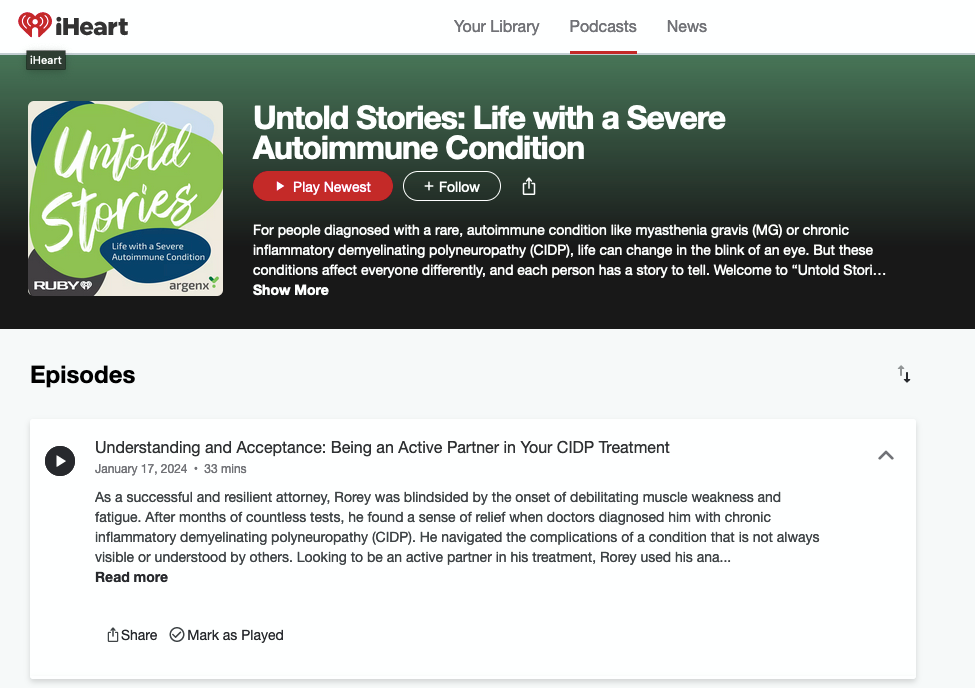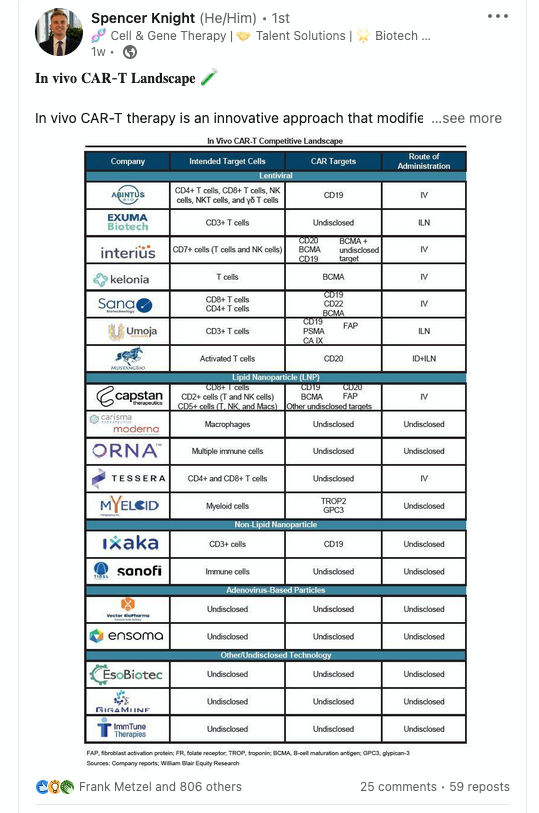Content marketing is quite a big deal these days, especially in the business world.
According to a recent study, some 73% of B2B marketers are incorporating content marketing into their overall digital marketing strategies.
Of those who do not use content marketing, 81% say they plan to start within 12 months.
But if content marketing is supposedly so prevalent, why aren't we seeing more success stories?
And in an industry like life sciences, where scientific education is part of the ecosystem, why don't we see more companies embracing content marketing?
My theory: despite what they say, many marketers aren't fully committed to a full-fledged content marketing strategy, resulting in poor results and demotivation.
So, to help my fellow science marketers, I decided to put together a guide to help you get started with your content marketing efforts.
Let’s start with the basics.
What is content marketing?
Content marketing is often contrasted with paid advertising because of its fundamentally different approach.
While paid advertising actively reaches out to consumers, content marketing takes a more passive, inbound strategy.
As the term suggests, it relies primarily on creating compelling content that attracts potential customers.
This approach is more subtle, yet effective, because it relies on the appeal of the content to attract an audience, rather than direct promotional tactics.
It's also important to remember that content marketing is not just about written content, but also includes other forms of content such as podcasts and videos.
What really sets content marketing apart from paid advertising (which also uses content, but in the form of ad assets) is the fact the content is generally produced to inform, rather than having a direct sales approach.
Another advantage is that content marketing can be used on many channels, such as social media, podcast distributors or video platforms, and benefit from the reach of these channels.
So why is it so hard to get it right?
How does content marketing work?
The reason many companies shy away from or fail at content marketing is that, unlike a direct advertising approach, content marketing requires long-term commitment and effort to be effective.
You can't just decide to launch your content marketing strategy for one month and call it good.
Effective content marketing requires years of effort, but ultimately pays off far more than any other marketing campaign.
Take this example of content marketing done right: Hubspot.
If I asked you to name a marketing automation software, you'd probably think of this one.
Why?
Because Hubspot has spent a decade delivering great content to marketers and sales teams.
It's a household name in marketing circles because if you type any marketing keyword into Google, chances are you'll end up reading a Hubspot blog post.
The effectiveness of content marketing is based on the fact that a prospect needs multiple touchpoints to convert.
This is even more true in a B2B industry like life sciences.
According to a 2022 survey, about 62% of B2B buyers will read 3 to 7 pieces of content before they agree to talk to a salesperson, which shows the importance of creating content for prospects.
And content marketing is not only effective at the top of your sales funnel, but it will also strengthen the bottom of your funnel.
As prospects continue to visit your site through your content, they are likely to search for more specific content over time, which in turn encourages them to come back and consume more of your content.
It's a positive feedback loop created by content.
Why should you use content marketing?
Despite the proven successes of many B2B companies, I still get the feeling that content marketing hasn't really taken off in life sciences.
This may have something to do with the nature of the industry, which is more technical and regulated than most.
But what seems clear to me is that content marketing in life sciences is still a blue ocean, ripe for opportunity.
Here are some key benefits to consider if you are still hesitating:
Reduce customer acquisition costs
With digital advertising costs rising five times faster than inflation, marketers need to look at other alternatives to generate low-cost leads.
Fortunately, content marketing is very good at this and is estimated to cost 62% less than traditional marketing.
Improve lead quality
This one is kind of obvious, but necessary to remember.
A lead that reads content you produce is always more likely to convert than a lead coming straight from an ad.
In fact, as one study showed, the conversion rate of content marketing adopters is nearly 6 times higher than non-adopters.
Build a stable lead pipeline
A study from Hubspot on 1,400 companies found that websites with blogs generated 68% more leads than websites without blogs.
Over time, this makes a huge difference in the number of leads you can generate.
Increase customer retention and trust
Another effect to consider is the benefit to your customer retention and trust in your brand.
If you have to choose between two products, but one of them is familiar to you because you have read one of their blog posts or watched one of their videos, which one will you choose?
The choice is instinctive, we automatically trust a company we have interacted with before, especially if that interaction was useful.
What most marketers don't realize is that content marketing requires you to give more upfront than you get.
Producing good content is not cheap and can be time-consuming, but this is the necessary trade-off you have to accept from the start if you want to be successful.
So let's take a look at where to start.
The 5 elements of successful content marketing
One reason many companies fail at content marketing is that they don't plan ahead, thinking that once the content is created, the job is done.
This couldn't be further from the truth.
Creating the content is only part of the equation, and often even that part is not approached as it should be.
For me, a good content marketing strategy requires 5 elements:
- Long-term planning
- Quality content
- Consistency
- Discoverability
- Actionability
Let's dive in one at a time.
1. Long-term planning
I can't say it enough: content marketing is not a short-term game.
It's naive to think you're going to hit it off with one piece of content.
So for me, it all starts with one thing: your commitment to creating content for the long term.
And by long term, I mean that your content marketing budget should cover at least a 1-year plan, or more if you can.
Time is of the essence.
The benefits of content marketing build up over time, like compound interest, and you won't see the biggest benefits until well down the road, maybe even several years from now.
So make sure your leadership is on board and your budget is in place, or you're in for a big disappointment.
2. Quality content
Nowadays anyone can write a crappy article in a few minutes thanks to ChatGPT.
Your content can't have that kind of standard, especially in the life sciences, where scientific scrutiny is crucial.
By quality, I mean a few different things:
- Your content should reflect your unique expertise
- Your sources should be credible and well-researched
- Your content should be targeted to your specific niche
- Your content should be clear, concise and persuasive
- Your content should keep a consistent style (you can use AI for this).
The quality of your content is the parameter that will most influence your first visitors, so make sure you make a good impression.
3. Consistency
The consistency of your content is crucial to build brand recognition, a key aspect of a good content marketing strategy.
By consistency, I don’t just mean the style of the content you produce or the design of your creative assets (although they should stay consistent!).
I also mean consistency in the deliverability of your content.
For example, if you decide to create blog posts, pick a publishing schedule—weekly, bi-weekly, monthly—and stick to it.
There is nothing worse than a blog with three posts from two years ago.
This is the kind of signal that tells your visitors never to come back.
Again, your long-term commitment will be important, so make sure you can deliver what you promise.
4. Discoverability
As I said earlier, creating the content is not the end of the story.
You also need to promote it and make sure it can be discovered.
And again, throwing a link on your LinkedIn won't do the trick.
Content marketing also means that you need to have a plan for various "discovery channels."
By that I mean you need to funnel your audience to your content, using social media, for example, or video platforms like YouTube if you're into video.
And to work properly, you need to spend time creating content that fits these channels.
If your choice falls upon LinkedIn, you need to make sure that the content you create on LinkedIn meets the expectations of the platform and its users.
Another quick tip: Don’t try to be everywhere.
Pick one discovery platform and focus on it until you master it and have a decent number of followers.
This is the only way to get really good at it.
5. Actionability
Finally, your content should always have a call to action.
But be careful, I don’t necessarily mean that every piece of content should be full of “contact our sales” or “ get a demo” messages.
What I mean is that a person who consumes a piece of your content should have a clear path to get more content.
If you're on Youtube, it's the "follow" button.
If you have a blog, there should be a button to subscribe to your newsletter (through which you will deliver future blog posts).
What’s important is to create loyalty and expectation with your audience.
If the content they consume is great, they will be inclined to follow you in the most obvious way.
And if the content continues to get better over time, they will recognize your brand and potentially become a loyal customer.
Steps to get started with content marketing
Now that you understand the basics, you're probably asking yourself: "Where do I start?"
Here’s how I approach any content marketing plan:
1/ Define your ideal target customer
As a marketer, you've probably already done this step, but it's important to remember that the content you produce must be for your specific target audience.
This will strongly influence the type of content you produce, the technical level, but also the delivery channels.
For example, if you only sell to molecular biologists, there is no need to create content that appeals to a broader audience (unless you have plans to expand your customer base).
The more niche you go, the better.
2/ Determine the purpose of your content
Similarly, you should decide what your audience will do with your content.
Do they need technical tutorials for their experiment, or business advice related to your field?
You need to decide the purpose of your content up front, as this will influence what you create and for what purpose.
3/ Map out your marketing funnel and choose your content formats
Now that you know who and what your content is for, you need to think about the funnel you will create.
Your content strategy should be at the top of your funnel because it's a great entry point for your target customers.
The more they get to know you, the more you can deliver specialized content or more straightforward sales materials.
The format you choose for your content will greatly influence this funnel, so be smart about it.
Also, choose carefully and don't try to do multiple formats at once.
If you decide to write articles, stick to that for now and don't be tempted by videos or podcasts (at least until you master the creation workflow).
4/ (Optional) Examine your existing content
You can skip this step if you are starting from scratch, but quite often, companies already have some form of content existing somewhere.
An easy way to kickstart your content marketing efforts is to repackage your existing content.
Perhaps you have an internal document that could be shared with your audience?
Or maybe you have an old blog post that could make the cut with a little tweaking.
Look at what you have and see if it fits your current strategy, but don't feel compelled to repurpose content if it's not good enough.
5/ Generate content ideas and establish a brand voice
Next, it’s time to make a big, long list of all the ideas you have.
Sit down and just jot down everything that comes to mind.
Don't settle for just a few ideas, try to come up with 30 to 50.
And if you are short on creativity, ask your colleagues or brainstorm with ChatGPT for possible ideas.
The more ideas you put on the page, the easier it will get.
Don’t forget to check SEO as well, as this could lead to low-hanging fruit with easy traffic for your website.
6/ Create a content calendar and workflow
Now that you have a nice list to be proud of, let’s put it on your calendar.
As I said earlier, you need to define the cadence of your content delivery from the beginning.
So if it's weekly, add one of your ideas to each week of your calendar (don't forget to include a break for major holidays if your audience tends to be away).
Also think about your creation workflow.
If you need to record a video every week or write a LinkedIn post every day, make sure that everyone involved is ready to meet the deadline.
It doesn't hurt to start with a more conservative schedule.
If you find that weekly is too much, try a bi-weekly or monthly plan.
You can even increase the cadence later if your audience demands it.
7/ Create and publish
This is the hard part if you've never produced content before.
I won't lie to you, if you don't feel confident about producing content, it's better to outsource it to a trusted partner.
The result will often be much better, and it will also help you focus on everything else in your content marketing plan.
8/ Test and measure results
Time to launch!
Make sure you have some ways to measure the metrics associated with your content.
But don't focus too much on them.
And don’t expect huge numbers at first.
Life sciences is a niche market, so getting your content in front of a few hundred people is already a success.
If it’s a few thousand, you should be very proud.
What's important is that you keep an eye on these metrics and experiment with new content ideas on a regular basis.
You should also quickly get to know your audience and ask them what they want to see next.
That's the best way to build lasting relationships.
Some content marketing examples in Life Sciences
Examples speak for themselves, so to help you get inspired, I put together a short list of companies doing various king of content marketing.
Example of blog content marketing

Benchling, a lab management software, has a content library full of useful resources for anyone interested in using digital tools in their lab.
They also regularly publish new content on their blog and host webinars with experts.
In such a competitive environment, where purchasing decisions can lock you in for years, this is a great way to build trust in your product.
Example of podcast content marketing

Biotech company argenx launched a podcast highlighting the lives of people with a rare disease called myasthenia gravis.
Despite the relatively small number of people affected by the disease, the limited 8-episode podcast garnered over 100,000 downloads, according to the company.
This shows how even the most niche topics can find a wide audience when presented in an engaging way.
Example of social media content marketing

Spencer Knight is a recruiter specializing in cell and gene therapy companies.
He writes a short post about the industry on his LinkedIn almost every day.
And it works!
His posts regularly receive hundreds of likes and comments, a clear indication of the real engagement he's creating.
This is a great example of a more passive approach to content marketing.
Instead of just writing recruiting posts, Spencer is building a real image as an expert in the field that interests him the most.
Bonus point: He also has a newsletter where he sends out a weekly roundup of cell and gene therapy news.
Get started now
Content marketing can be daunting because it's a big topic with a lot of possibilities.
But don't overthink it, keep it simple, set realistic goals that you can achieve with your own budget and time, and hit the ground running.
Every content marketing success had to start somewhere, often simply by writing a blog post on a regular basis.
It's definitely a step most companies can take.
Now is your chance and if you need help from someone who's been creating content online for the last ten years, feel free to reach out.





